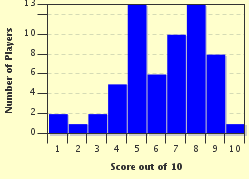Quiz Answer Key and Fun Facts
1. Charles I inherited the throne of England, along with many problems, from his father. Which of the following monarchs was the father of Charles I?
2. The prevailing thought among European monarchs at the time of Charles I, who reigned from 1625-1642, was the idea that their power was mandated from God. What is this political doctrine called?
3. During the reign of Charles I, England was still in the midst of religious turmoil that had started during the reign of Henry VIII. What did Charles do that many thought was unforgivable?
4. Charles I had constant financial problems. One of the ways he raised money was through reactivating an old law called Distraint of Knighthood. How did this enable Charles to raise money?
5. Charles had ongoing problems with Parliament and at times would simply cancel future meetings of the group. By what term is this cancellation of meetings known?
6. Having been dismissed by Charles I, the members of Parliament drafted a document which attempted to reaffirm limits to the king's power. What was the name of the document that was passed June 7, 1628?
7. In addition to the financial crisis experienced by Charles I, there was also the question regarding how far the religious Reformation begun by Henry VIII should go. Who was appointed in 1633 as Archbishop of Canterbury to deal with these issues?
8. After refusing to let Parliament meet for eleven years, a period called the "personal rule" or the "eleven years' tyranny", Charles badly needed funds, and had no choice but to call Parliament into session. The first meeting in April 1640 only lasted three weeks, but in November of the same year, the king called which Parliament into session?
9. Which charge was levied against King Charles I at his trial in 1649?
10. What do historians call the new government that was established in England after the execution of Charles I?
Source: Author
ponycargirl
This quiz was reviewed by FunTrivia editor
Pagiedamon before going online.
Any errors found in FunTrivia content are routinely corrected through our feedback system.

